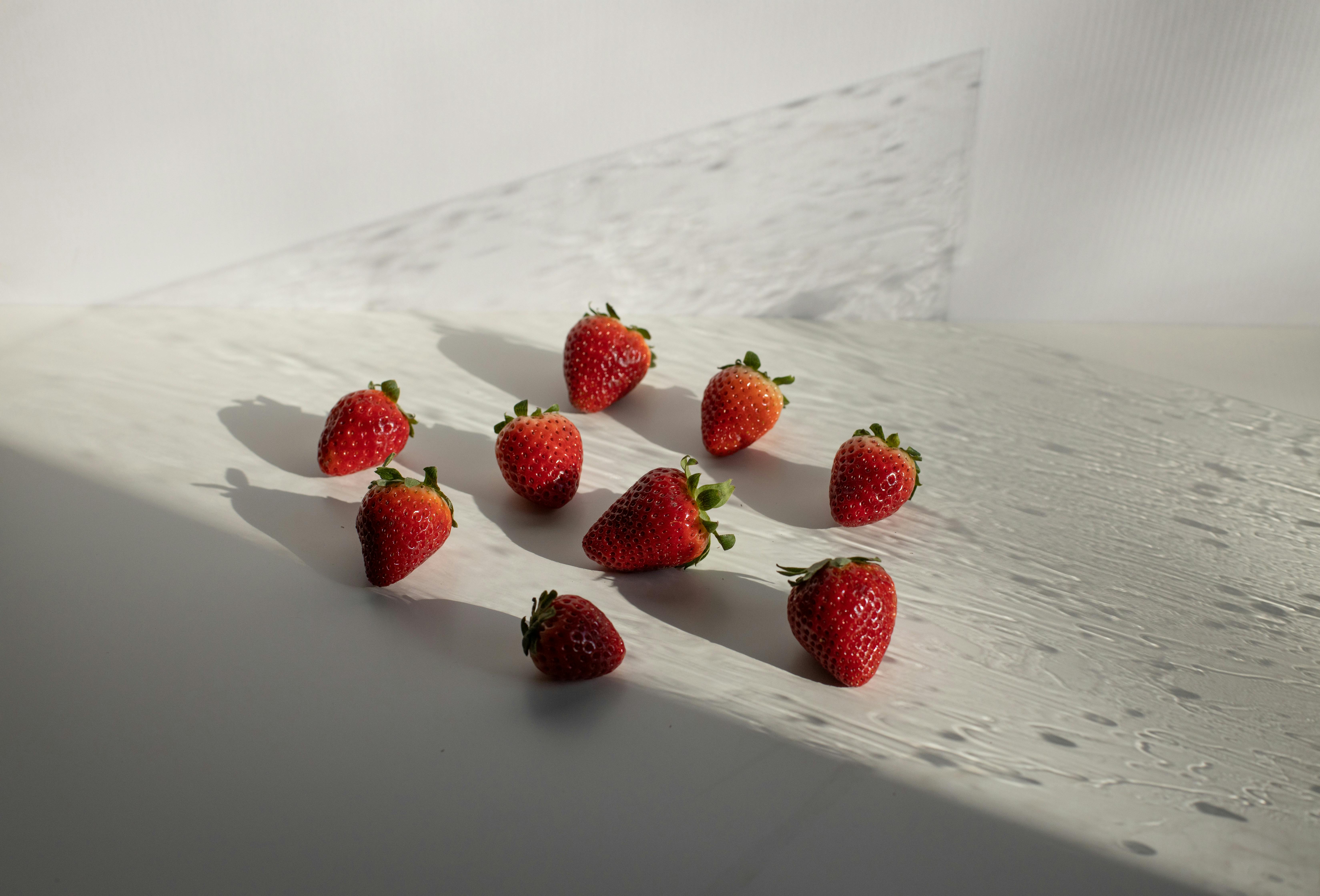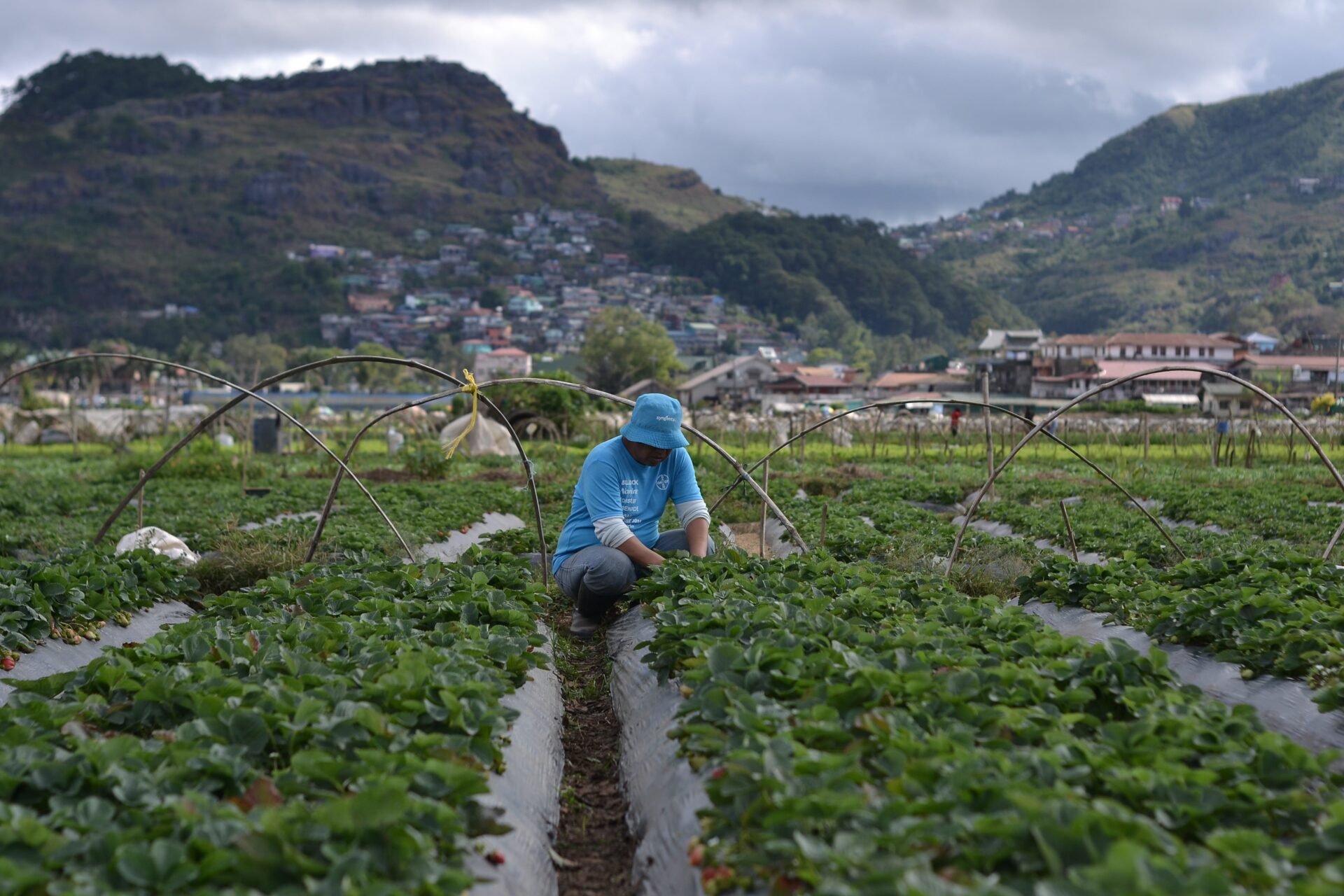Strawberry plants reproduce through a process called vegetative propagation. This method of reproduction involves taking pieces of the parent plant and replanting them to form a new plant. In addition, strawberries can also reproduce through the formation of seeds. This article will discuss both methods of strawberry plant reproduction and explain how they work.Strawberry plants reproduce through two main methods: sexual reproduction and asexual reproduction. Sexual reproduction occurs when male and female reproductive cells, or gametes, from two parent plants unite to form a new plant. Asexual reproduction occurs when the parent plant produces a new plant through vegetative propagation, such as runners or tissue culture.
How Do Strawberry Plants Reproduce Sexually?
Strawberry plants reproduce sexually by producing seeds from the flowers. The process begins with pollination, which is the transfer of pollen from one flower to another. Once the pollen has been transferred, the flower will form a seed and the plant will begin to produce fruit. The fruit contains the seeds, which can be planted in soil to grow new strawberry plants. Strawberry plants can also be propagated through runners, which are stems that grow out from the base of the plant and produce new roots and leaves.
The process of sexual reproduction in strawberry plants involves two distinct stages: fertilization and seed formation. During fertilization, two haploid cells (the male and female gametes) combine to form a single diploid cell known as a zygote. This zygote then develops into an embryo within an ovule inside the flower’s ovary wall. As the embryo grows, it forms a seed that eventually drops off from the flower and is able to germinate when it finds suitable conditions for growth.
In addition to sexual reproduction, strawberry plants can also reproduce asexually through vegetative propagation. This involves taking cuttings or “runners” from existing plants and planting them in soil or other mediums such as sand or vermiculite to produce new plants that are genetically identical to their parent plant. In this way, asexual reproduction allows strawberry growers to quickly propagate new plants without having to wait for pollination and seed formation processes.
Overall, strawberry plants reproduce sexually by producing seeds through pollination and fertilization processes; as well as asexually through vegetative propagation methods such as runners or cuttings. Both methods allow growers to propagate new plants quickly while maintaining genetic diversity in their crops.
How Do Strawberry Plants Reproduce Asexually?
Strawberry plants are able to reproduce asexually, or without the need for a male and female plant to mate. This process is called vegetative propagation and is one of the most common methods of propagating strawberries. In this method, new plants are produced from existing strawberry plants without any involvement of another plant or pollination. The existing strawberry plant acts as both parents, providing all the genetic material needed for propagation.
Vegetative propagation can be accomplished through several different methods. One method is by taking cuttings from the runners of an established strawberry plant and planting them in soil. These cuttings will take root and form their own plants with the same characteristics as their parent plant. Another method is through division, in which an established plant is divided into several parts, each with roots and shoots, then replanted in soil or another medium. Finally, layering involves bending a runner down onto soil where it will take root and form a new plant. All of these methods are easy to do at home and allow gardeners to quickly expand their strawberry patches with healthy, strong plants that have been reproduced asexually from existing ones.
Asexual reproduction has many advantages over sexual reproduction for strawberry growers. It allows them to produce large numbers of genetically identical plants quickly and cheaply without needing two parent plants, saving time and money in the process. Additionally, it ensures that all new plants have the same desirable characteristics as their parent plant since they receive all of their genetic material from one source – no need for pollination or other forms of sexual selection that could result in variation between offspring.
Overall, asexual reproduction is an excellent way for gardeners to propagate strawberries quickly and easily with guaranteed results that can be trusted every time. With proper care and maintenance, it can provide an abundance of healthy strawberries year after year!
Benefits of Asexual Reproduction in Strawberry Plants
Asexual reproduction is a great way for strawberry plants to reproduce without the need for a mate. Through asexual reproduction, strawberry plants are able to produce offspring that are genetically identical to the parent plant. This has many benefits for the strawberry plants, allowing them to quickly and easily spread across large areas and reproduce in numbers.
One of the main benefits of asexual reproduction is that it is much faster than sexual reproduction. Since there is no need for fertilization between two individuals, the process of producing offspring can happen much more quickly. This allows strawberry plants to quickly spread over large areas and colonize new habitats.
Another benefit of asexual reproduction in strawberry plants is that it can be used to produce large numbers of offspring with identical genetic characteristics. Since each offspring is an exact genetic copy of the parent plant, it will have all of the same traits as its parent. This makes it easier to select desirable traits from a single plant, as all of its offspring will have those same traits.
Finally, asexual reproduction can help strawberry plants survive in difficult environments. In harsher conditions where there may not be enough nutrients or resources available for sexual reproduction, asexual reproduction can ensure that some offspring are still produced. This increases the chances of survival for those individuals and helps ensure that the species continues to thrive in difficult conditions.
Overall, asexual reproduction offers many advantages to strawberry plants, allowing them to quickly spread across large areas and reproduce in abundance with identical genetic characteristics. It also helps them survive in difficult environments where resources may be scarce and ensures their continued survival as a species over time.
The Process of Sexual Reproduction in Strawberry Plants
Strawberry plants are an important crop for people around the world, as they are a popular fruit full of flavor and nutritional value. A key component in the production of the strawberry is its process of sexual reproduction, which is a naturally occurring event necessary for the production of viable seeds. Strawberry plants are dioecious, meaning that there are both male and female plants, which contain different types of reproductive organs. The male plants produce pollen, while the female plants produce flowers with ovules inside them.
In order for sexual reproduction to occur in strawberry plants, pollination must take place first. This is typically done by wind or insects like bees or butterflies that enter into the flowers and transfer pollen from the male to female plants. Once pollination has occurred, fertilization can take place. This happens when pollen lands on a receptive stigma on a female flower and travels down through its style to reach an ovule in the plant’s ovary.
Once fertilization has been successful, it will result in the formation of a seed within the ovary. These seeds will eventually develop into new strawberry plants when planted and cared for properly. It is important to note that even if pollination has taken place but fertilization is unsuccessful, it can still result in small fruits that lack seeds or viable fruit due to genetic incompatibility between different varieties of strawberry plants’ pollen grains and their respective styles.
It is also worth noting that some forms of strawberries do not require sexual reproduction at all as they can reproduce via vegetative propagation methods such as runners or stolons from existing mother plants. Regardless, understanding the process of sexual reproduction in strawberry plants is important for any grower looking to maximize their yields and ensure healthy harvests of these delicious fruits each season.

Why Some Strawberry Plants Rely on Sexual Reproduction
Strawberry plants are one of the most popular fruits in the world, and as such, they rely on sexual reproduction to ensure their species’ survival. This is because sexual reproduction produces offspring with a combination of traits from both parents, allowing for the potential for more diverse and adaptive populations. Additionally, it allows for different strawberry plants to mate with one another, increasing genetic diversity within the species.
It is also important for strawberry plants to rely on sexual reproduction because it allows them to adapt over time to changes in their environment. By reproducing sexually, offspring can be produced with traits that are better suited for a particular environment, making them more likely to survive and reproduce. Furthermore, sexual reproduction allows different varieties of strawberry plants to cross-pollinate with each other, producing new varieties that may have different characteristics than their parents.
Finally, sexual reproduction helps strawberry plants maintain strong genetic diversity within their populations. By allowing different varieties of strawberries to mate with each other, different combinations of genes can be created that may produce offspring with more desirable traits. This increases the chances that these offspring will survive and reproduce in the future – thereby ensuring the survival of the species as a whole.
Overall, there are many reasons why some strawberry plants rely on sexual reproduction for survival and success. It increases genetic diversity within populations, allows for adaptation to environmental changes over time, and provides an opportunity for different varieties of strawberries to mate with each other – all of which are essential components of a healthy and successful species.
Environmental Factors
The success of sexual reproduction in strawberry plants is heavily dependent on the environment in which they grow. Temperature, light intensity, and soil quality are all important considerations for strawberry growers. Temperature affects the ripening of the fruit and optimal temperatures range from 65 to 75 degrees Fahrenheit. Light intensity is important for photosynthesis, which is necessary for plant growth and development. Soil quality affects how well plants absorb water and nutrients, both of which are critical for healthy strawberry growth. Poor soil quality can also lead to disease and pest infestations.
Pollination
Pollination is essential for successful sexual reproduction in strawberry plants. Pollinators such as bees, butterflies, moths, and other insects can transfer pollen from one flower to another, allowing the flowers to be fertilized and produce fruit. Without pollinators, there would be no fertilization of flowers and therefore no fruit production. Growers must ensure adequate pollinator populations in their fields by providing a variety of flowering plants that can serve as food sources for pollinators.
Genetic Factors
The genetics of the strawberry plant also plays an important role in successful sexual reproduction. Strawberry plants are typically bred to produce larger fruits with improved flavor and texture. This involves selecting specific traits that are desirable for commercial production such as disease resistance or increased yields. By selecting particular traits through breeding programs, growers can ensure that their crop has the best chance of success.
Nutrition
Nutrition is another key factor that affects the success of sexual reproduction in strawberry plants. Nutrients such as nitrogen, phosphorus, potassium and calcium are all essential for healthy plant growth and development. Nutrient deficiencies can lead to stunted growth or poor fruit production so it’s important that growers regularly monitor soil nutrient levels and supplement accordingly.
Overall, environmental factors, pollination, genetics and nutrition all play an important role in determining the success of sexual reproduction in strawberry plants. By monitoring these factors closely and making adjustments as needed, growers can ensure their crop has the best chance at producing a good yield each year.
Challenges Faced During Asexual Reproduction in Strawberry Plants
Asexual reproduction in strawberry plants is a process by which a single parent plant produces offspring that are genetically identical to the parent. Although this method offers certain advantages, it can also be problematic due to the lack of genetic diversity. Here, we will discuss some of the key challenges faced when propagating strawberry plants through asexual reproduction.
One of the main challenges of asexual reproduction in strawberry plants is susceptibility to disease and pests. Since all of the offspring are genetically identical to each other and to their parent, they all share the same weaknesses and susceptibilities. If one plant is affected by a disease or pest, then all of its offspring will be equally susceptible, making them more vulnerable than those propagated through sexual reproduction methods.
Another issue with asexual reproduction is that it does not allow for any genetic variation within the population. This can be problematic because it limits the potential for desirable traits such as improved flavor or higher yields to be passed on from one generation to the next. Additionally, this lack of genetic diversity may also lead to an increased likelihood of certain negative traits such as reduced vigor or susceptibility to disease being passed down as well.
Finally, asexual reproduction can also lead to inbreeding depression due to repeated self-pollination over multiple generations. This can reduce fertility and overall health in both individual plants and entire populations. In order to avoid this problem, gardeners should take steps such as planting different varieties of strawberry plants close together or using hand pollination methods in order to ensure greater genetic diversity within their crops.

Conclusion
Strawberry plants reproduce by producing runners and seeds. Strawberry plants are called “stoloniferous” because of their ability to produce runners. The runners grow out from the parent plant and form new daughter plants that will eventually produce flowers and fruit. Flowering and pollination must occur for a strawberry plant to produce seeds. Once the seeds develop, they can be harvested to propagate new strawberry plants.
Strawberry propagation is an important part of commercial production, as it ensures a consistent supply of healthy plants each year. Home gardeners can also use this method to propagate their own strawberry plants in order to enjoy fresh, homegrown strawberries each season. Whatever your reason for growing strawberries, understanding how strawberry plants reproduce can help you get the most out of your crop.
With the right knowledge and care, anyone can successfully cultivate a delicious crop of strawberries each season. Understanding how strawberry plants reproduce is an important part of successful propagation and cultivation. With this information in hand, you’ll be well on your way to enjoying a sweet harvest this year!



